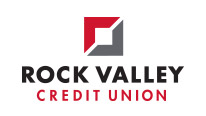Rock Valley Credit Union e-Services
Life is busy and at Rock Valley Credit Union, there are a number of convenient ways to manage your finances. Whether you are at home, at the office or wherever your travels take you, you're never out of touch with your Rock Valley Credit Union accounts. Rock Valley provides FREE access to your account information anytime from anywhere.
- Account Balances – Obtain balances for checking, savings and loan accounts
- Account History – View historical account information via NetTeller and e-Statements
- e-Statements – View statements for up to 2 years
- Transfer Money – Transfer money between your RVCU accounts
- Make Loan Payments – Transfer money to make your RVCU loan payments
- View Images – View images of checks you have written
- Free Bill Payment – pay your bills electronically (checking account required)
- Download Your Finances – Download your information into personal financial software
- Online Banking
- e-Statements
- For smart phone users access your account by downloading the RVCU App from the App Store or Google Play.
Conducting Your Transactions Online (Guide)
Federal financial regulators are reporting that Internet threats have changed significantly over the past several years. Sophisticated hacking techniques and growing organized cyber-criminal groups are increasingly targeting financial institutions, compromising security controls, and engaging in on line account takeovers and fraudulent electronic funds transfers.
In order to help ensure the security of your on line transactions, we want you to know that:
- We will never email, call or otherwise ask you for your user name, password or other electronic banking credentials
- You can help protect yourself by implementing alternative risk control processes like:
- Making sure your choose an adequate user name and password that, at a minimum, mixes in small case letters, upper case letters and numbers
- Periodically changing your password (e.g., at least every 90 days)
- Safeguarding your user name and password information
- Making sure you have a firewall in place when conducting your financial transactions
- Logging off the system when you're done conducting business (don't just close the page or "X" out of the system)
- Monitoring your account activity on a regular basis
In addition, we may require owners of business accounts to perform their own risk assessments and controls evaluations. For example:
- Make a list of the risks related to on line transactions that your business faces including:
- Passwords being written down and left out in the open
- The use of old or inadequate passwords
- The possibility of internal fraud or theft
- Delays in terminating the rights of former employees
- The lack of dual control over other checks and balances over individual access to on line transaction capabilities
- An evaluation of controls your business uses may include:
- Using password protected software to house passwords in
- Conducting employee background checks
- Initiating a policy and process to terminate access for former employees
- Segregating duties among two or more people so no one person has too much access or control
- Conducting internal or third party audits of controls
- Using firewalls to protect from outside intrusion or hackers
Federal regulations provide consumers with some protections for electronic fund transfers. These regulations generally apply to accounts with Internet access. For example, these federal laws establish limits on a consumer's liability for unauthorized electronic fund transfers. They also provide specific steps you need to take to help resolve an error with your account. Note, however, that in order to take advantage of these protections, you must act in a timely manner. Make sure you notify us immediately if you believe your access information has been stolen or compromised. Also, review your account activity and periodic statement and promptly report any errors or unauthorized transactions. See the Electronic Fund Transfer disclosures that were provided at account opening for more information on these types of protections. Ask us and we will gladly provide you with a copy.
If you become aware of suspicious account activity, you should immediately contact the authorities and contact us at 815-282-0300.




